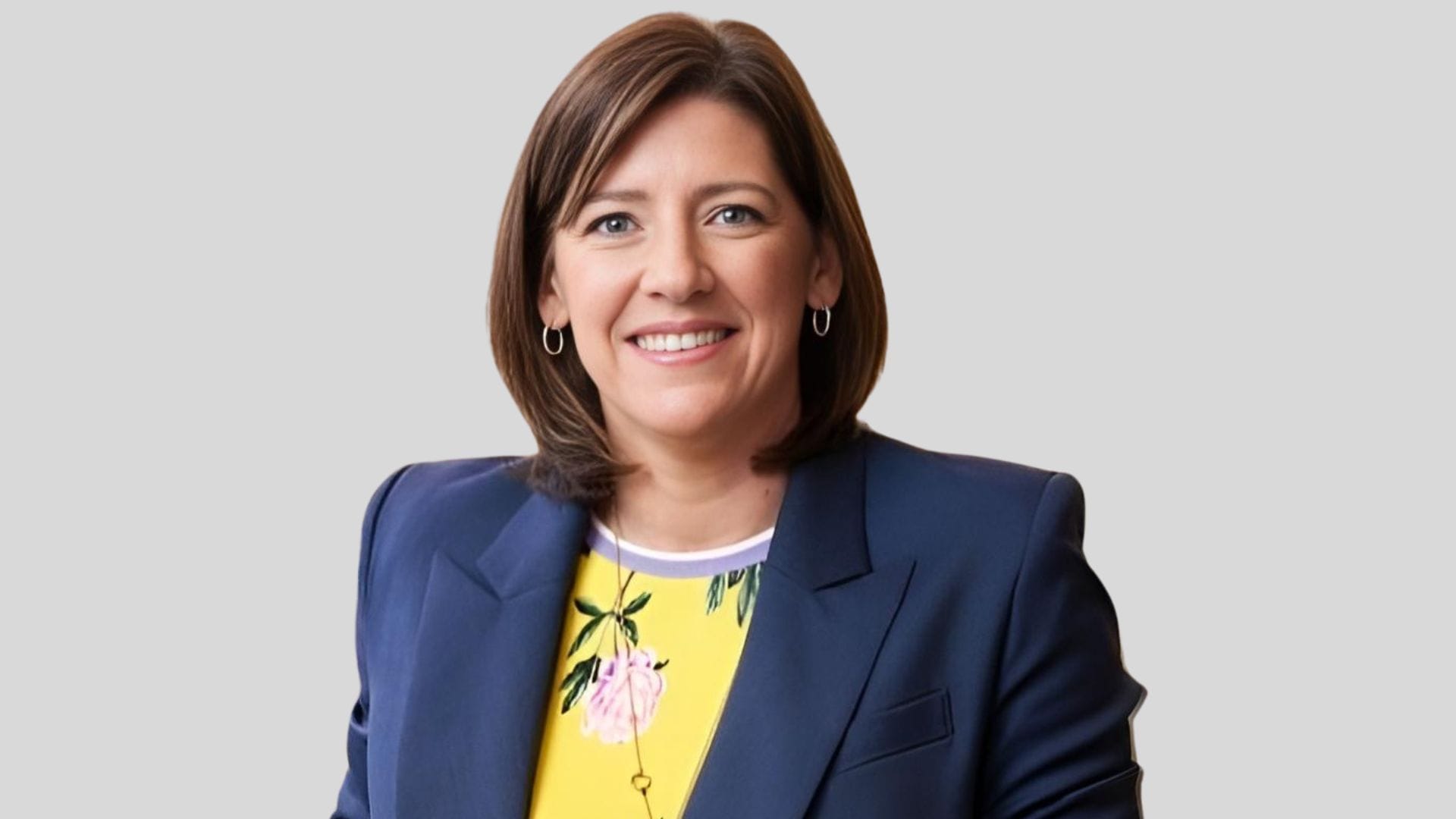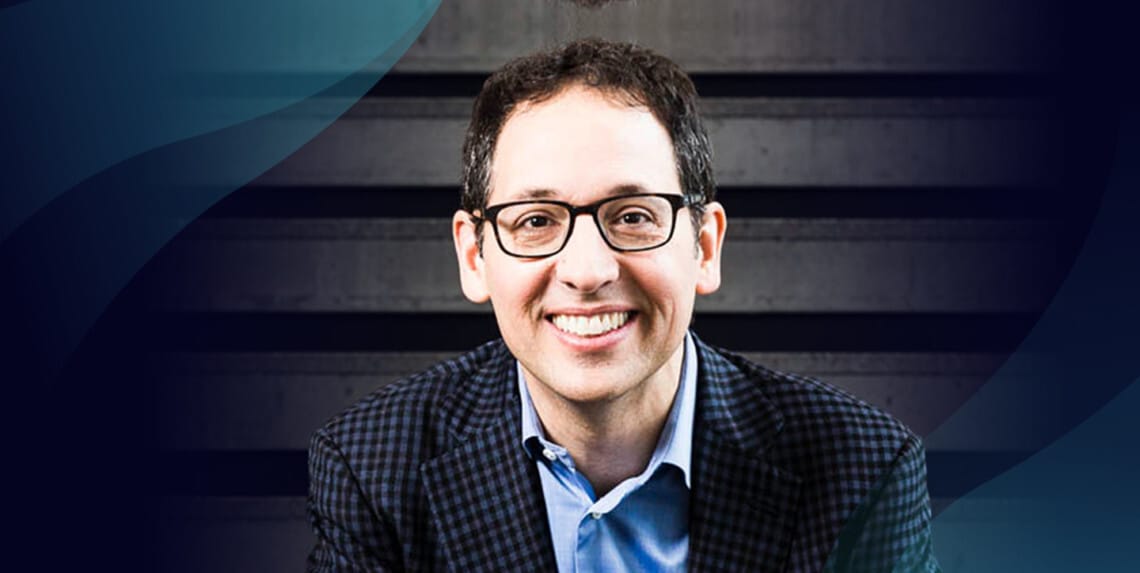Climbing to CMO: Insights from the Top Fortune 50 Marketing Chiefs
The profiles of Fortune 50 CMOs paint a picture of high-achieving, well-prepared leaders who have navigated extensive careers to reach the summit of marketing. For those who aspire to join their ranks, the roadmap is clearer than ever.

Aspiring to join the ranks of Fortune 500 CMOs means understanding the paths and patterns that today’s top marketing leaders have followed. We researched the CMOs (or equivalent senior marketing executives) at the top 50 companies from the most recent Fortune 500 list.
From educational backgrounds and career moves to where they live and how much they earn, clear trends emerge. Below, we break down these findings into key insights – and what they mean for up-and-coming marketing professionals aiming for the CMO suite.
Educational Backgrounds
MBAs, Ivies - and Some Surprises
Elite Education is Common
The majority of Fortune 50 CMOs boast strong academic credentials. Many hold degrees from top-tier universities and often an MBA on top of their undergraduate education. For example, Walmart CMO William White earned both a Bachelor’s in Public Policy and an MBA in Marketing from Duke University – a combination of liberal arts and business training that is common among marketing chiefs. Morgan Flatley, the former U.S. CMO of McDonald’s (now a PepsiCo marketing leader), similarly has an Ivy League foundation with a Dartmouth College undergraduate degree and an MBA from Harvard Business School. These examples reflect a broader trend: many CMOs have advanced degrees (especially MBAs) in addition to their bachelor’s. An MBA is seen as a way to build strategic, financial, and leadership skills, which can be crucial for the top marketing job.

Diverse Fields of Study
While business and marketing degrees are prevalent, not every top CMO took a traditional marketing major path. Some studied technical or unrelated fields before pivoting to marketing. Apple’s marketing head Greg “Joz” Joswiak is a case in point – he graduated with a Bachelor of Science in Computer Engineering (University of Michigan, 1986) and spent his entire career at Apple in various marketing roles. His example shows that a technical or non-marketing undergrad degree isn’t a barrier; what matters is how you leverage that background. Many CMOs augment their non-business degrees with on-the-job marketing experience or later executive education. In short, while nearly all have at least a bachelor’s (and often a master’s), their fields of study range from engineering to liberal arts, with a solid contingent holding MBAs for the business acumen boost.

Trend – MBAs but Not Always Ivy
Interestingly, an Ivy League diploma is not a strict prerequisite. Top marketers come from a mix of schools. Some did attend Ivies or renowned business schools (Harvard, Wharton, Kellogg, etc.), but others rose through state schools or international universities. The unifying theme is strong performance and learning agility rather than a specific college name. As one industry analysis noted, many CMOs hold a business or marketing degree and often an MBA, but there’s no single “must-have” school – it’s the skills and network gained that count. For aspiring CMOs, the takeaway is: invest in education that builds strategic thinking – an MBA or similar credentials can help – but remember that real-world marketing results carry equal weight.
Career Trajectories
Long Roads, Big Leaps, and Multiple Hats
Decades of Climbing the Ladder
Reaching the CMO chair at a Fortune 50 firm typically comes after 20+ years of experience across multiple roles. It’s rare to see a meteoric rise without paying dues. William White (Walmart CMO), for instance, has a work history spanning eight distinct roles before landing the CMO title. He started as an assistant media planner, moved through brand management at Coca-Cola, then senior marketing roles at Target, before being hired to lead Walmart’s marketing.

This trajectory – a mix of lateral moves and upward steps – is typical. Many CMOs have worked at 3-5 different companies (often in the same industry or adjacent ones) or climbed internally through numerous promotions. By the time they’re CMOs, they’ve overseen campaigns, teams, and often international markets.
Internal Promotions vs. External Hires
A notable trend in recent years is the prevalence of first-time CMOs who were promoted from within. About 58% of Fortune 500 CMOs were promoted internally into the role. In fact, 71% were serving in their first-ever CMO role (i.e., they had not been a CMO at a previous company). This suggests companies often groom their own marketing leaders through succession planning. For B2B companies the internal promotion rate is even higher (63%), though B2C firms also fill over half of CMO jobs with insiders. On the flip side, when companies go external, they increasingly draw talent from other industries: 43% of externally hired CMOs came from a different industry in 2023. In practice, that means a CMO at a top bank might come from a tech firm, or a retail CMO might have a background in consumer products. This cross-pollination is a newer development reflecting how marketing skills are seen as transferable.
Short Tenures, High Turnover
Despite the long road to get there, CMOs don’t stay in the job as long as you might expect. The average tenure for a Fortune 500 CMO is about 4.2 years, roughly on par with other C-suite roles, though a bit shorter for consumer-focused companies. This means many top marketing execs move on (or up) relatively quickly – either to bigger roles, CEO positions, or a new company. It highlights the intense pressure and fast-changing nature of the job. However, some buck the trend with marathon careers at one firm. Apple’s Greg Joswiak again is illustrative: he joined Apple in 1986 and never left, working 34+ years at the same company before ascending to SVP of Marketing. Such loyalty is the exception; more commonly, top CMOs are seasoned industry veterans who have navigated multiple companies and roles, developing a versatile toolkit.
Breadth of Responsibility
Another aspect of career trajectory is the scope of roles held. Many CMOs wore adjacent hats in their journey – overseeing not just advertising, but also product management, sales, or communications at times. The modern marketing chief often has a broad purview (“CMO+” as some call it). In fact, about one-third of Fortune 500 CMOs today lead additional functions beyond marketing (such as communications, customer experience, or e-commerce).
This trend means aspiring CMOs should seek experiences beyond traditional marketing silos. The typical path involves lateral growth – e.g. taking on a digital marketing stint, a general manager role, or a regional leadership post – not just upward title jumps. The varied past roles of today’s CMOs show that career mobility (both cross-functional and cross-industry) is a hallmark of reaching the top.
Geographic Distribution
From Silicon Valley to Bentonville, Arkansas
Hubs and Headquarters
The top 50 Fortune 500 companies are headquartered across the United States, and their chief marketers generally live and work near those HQs. As a result, CMOs are dispersed in several key geographic hubs. There’s a heavy presence in traditional business centers like New York (for financial giants like JPMorgan Chase or Citigroup) and Silicon Valley (for tech titans like Apple, whose marketing lead operates out of Cupertino, CA).

West Coast vs. East Coast
Tech and telecom companies (Apple, Alphabet/Google, Meta, Microsoft, AT&T) often place their marketing teams on the West Coast (Seattle area or Northern California), whereas big banks, media, and pharma firms cluster their marketing leadership on the East Coast (New York City or New Jersey corridor).
Rising Southern and Midwestern Centers
Not all top CMOs are in coastal capitals. Company towns and smaller cities play a role too. For example, Walmart’s CMO relocated to Bentonville, Arkansas – Walmart’s home base – when he took the job . Likewise, Target’s CMO operates from Minneapolis, and Home Depot’s from Atlanta. Many retail and healthcare Fortune 50 firms are based in the Midwest or South (think Cincinnati for Kroger and Procter & Gamble, Charlotte for Lowe’s, Houston for Phillips 66, Minneapolis for UnitedHealth Group). Chicago is another marketing executive hub, being home to companies like Boeing (Fortune 50 adjacent) and a talent pool for consumer brands; even CMOs of companies based elsewhere might reside in Chicago if that’s a legacy base (for instance, McDonald’s global CMO Morgan Flatley resides in Chicago given the company’s HQ there).

The geographic spread of Fortune 50 CMOs is wide, but a pattern emerges: they congregate where their companies are headquartered or have major corporate offices. This often means living in or near major metropolitan areas or notable corporate towns, from San Francisco Bay Area and Seattle to New York, Dallas, Atlanta, and smaller HQ cities like Bentonville or Omaha.
Global Experience, Local Presence
Interestingly, while these CMOs live across the U.S., many have global market responsibilities and backgrounds. It’s common for a Fortune 50 CMO to have done stints abroad or managed international teams. (Google’s Irish-born CMO Lorraine Twohill, for example, ran marketing in Europe before moving to California to lead Google’s global marketing.) So although the current residence might be tied to HQ, the worldview is broad.

For aspiring CMOs, this means being open to relocation and international assignments. You may need to move to where the business is – whether that’s the company’s hometown (even if it’s off the beaten path) or key markets overseas – to climb the ladder. The good news is that Fortune 500 companies span many regions, so top marketing jobs aren’t only found in NYC or SF; talent is needed in heartland corporate centers as well.
The Pay at the Peak
CMO Compensation Insights
It’s no secret that C-suite jobs come with high compensation, and chief marketers at Fortune 50 firms are very well paid – typically reaching seven figures annually. While exact salaries can be hard to pin down (not all CMOs are named in public filings unless they’re among the five highest-paid executives at their company), available data and estimates show a lucrative picture:
Multi-Million Dollar Packages
In many Fortune 50 firms, the CMO’s total annual compensation (salary + bonus + stock) is in the millions. For example, Walmart’s CMO William White earned roughly $4.1 million in total compensation in a recent year. This figure includes base salary plus incentives and stock grants. In the tech sector, compensation can be even higher when stock performance soars. (Microsoft’s longtime CMO Chris Capossela has regularly sold stock worth millions, indicative of substantial equity awards on top of his salary.)

Comparison to Averages
These top-end pay packages dwarf the average marketing executive salary. Industry surveys put the average U.S. CMO salary around $185,000 (with total pay up to ~$340,000), but that number spans all company sizes. At Fortune 50 scale, base salaries alone often hit high six figures, and bonuses or stock can multiply that. It’s not unusual for a Fortune 500 CMO to have a base salary near $500k-$1M and receive additional incentive pay pushing the total well into seven figures.
Factors Influencing Pay
Company size and industry greatly influence CMO pay. Generally, tech and finance companies grant larger equity packages, whereas retail and consumer goods might have more modest (though still hefty) payouts. Tenure also matters – a newly hired CMO might get a one-time new-hire equity grant (bumping that year’s pay), whereas a veteran CMO could accumulate significant stock value over time. Another interesting point: the rise of women in CMO roles has not led to a pay gap at this level – female CMOs at Fortune 50 firms command comparable pay, and in some cases higher, as pay is tied to company scale more than individual demographics.
In short, the CMO role at a Fortune 50 is both influential and financially rewarding, often placing the executive in at least the top 0.1% of earners. For aspiring CMOs, while money shouldn’t be the only motivator, the compensation reflects the high stakes and expectations of the role.
Takeaways for Aspiring CMOs
How to Get from Where You Are to the C-Suite
What actionable lessons can a future marketing leader draw from these patterns? Here are the top takeaways based on our analysis of Fortune 50 CMOs:
1. Invest in Education
but Keep Learning on the Job: A bachelor’s is a must, and an MBA or other advanced degree is highly common among top CMOs . An MBA can fast-track your strategic, financial, and leadership skills – consider it if you aim for the C-suite. However, don’t panic if you’re not a business major; success stories like tech-trained Greg Joswiak prove that excelling in marketing roles can matter more than your college major. The key is continuous learning – whether via formal education or picking up digital, data, and management skills throughout your career.
2. Build a Broad Career Foundation
Early in your career, seek variety in your roles. Rotate through different marketing functions (brand management, digital, analytics, communications, product marketing) to become a well-rounded marketer. Many Fortune 500 CMOs had 5+ roles before reaching the top, spanning agencies, consumer brands, and regional posts. Don’t shy away from lateral moves that expand your skill set. Aim to develop both depth (expertise in marketing) and breadth (cross-functional insight), even taking on roles in sales or general management if possible. This multi-faceted experience mirrors the broader remit many CMOs have today .
3. Consider Internal Paths – Demonstrate Leadership Potential
Over half of Fortune 500 CMOs were promoted internally , which means companies like to elevate known, proven talent. If you’re with a great company, plotting a long-term path there can pay off. To do so, focus on delivering results and demonstrating leadership and strategic thinking that get you noticed as “CMO material.”
Seek out mentorship and let it be known you aspire to the top marketing job. Companies are increasingly developing succession plans for CMOs, so being on that radar is crucial. That said, balance patience with readiness: if opportunity knocks elsewhere, don’t be afraid to take your first CMO role at a smaller firm or different industry, then potentially boomerang back at a higher level.
4. Be Open to Mobility – Both Industry and Location
The data shows that many CMOs made big moves – switching industries (43% of external hires came from a different sector) or relocating to far-flung HQ cities. Flexibility can greatly expand your opportunities. You might need to move to company headquarters or a major market; for example, relocating to the Midwest or South for a retail CMO role (as Walmart’s CMO did to Arkansas ) or to the West Coast for a tech company. Likewise, don’t pigeonhole yourself in one industry.
Core marketing skills (brand storytelling, customer insight, digital engagement) are transferable; being able to apply them in various contexts is a strength. Many top CMOs prove their versatility by hopping between, say, packaged goods and tech, or media and finance.
5. Cultivate Strategic Vision and Results
Ultimately, what gets you to the CMO seat is the ability to connect marketing initiatives to business growth. Aspiring CMOs should hone their analytic skills, understand market research and data, and practice linking campaigns to revenue outcomes. The modern CMO is expected to be as comfortable discussing ROI and financial metrics as creative strategy. Also, build your leadership identity – top CMOs often serve as the voice of the customer internally and need to influence across the organization. Show that you can drive cross-functional impact and rally teams around a vision. Those qualities will set you apart when boards and CEOs choose a marketing chief.
6. Underrepresented? Leverage the Diversity Tailwind
One encouraging trend for future leaders – the CMO role has become one of the most diverse in the C-suite, with women now holding 50% of Fortune 500 CMO positions. There’s also a push for more ethnic diversity (though progress there has been slower, around 12% representation).
For talented marketers from underrepresented groups, the path to the top is more open than ever. Use that momentum: seek out companies known for inclusive leadership development, and find mentors or sponsors who champion diversity. The marketing field, being attuned to culture, is leading the way in diversity – and that can be an advantage for rising stars who might not have seen themselves in those roles a generation ago.
TL;DR
The profiles of Fortune 50 CMOs paint a picture of high-achieving, well-prepared leaders who have navigated extensive careers to reach the summit of marketing. Common threads include strong educational foundations (often enhanced by MBAs), wide-ranging career experience (frequently across multiple companies and roles), and a willingness to embrace new challenges – whether that means moving to a new city or stepping into a vastly different market environment. They are rewarded not only with influence over billion-dollar brands but also with compensation packages reflecting the responsibility (multi-million dollar pay in many cases).
For those who aspire to join their ranks, the roadmap is clearer than ever: focus on building a broad and deep marketing skill set, pursue higher education and continuous learning, stay mobile and open to opportunity, and cultivate the kind of strategic leadership that drives business results. Equally important, pay attention to industry trends – such as the evolving scope of the CMO role and the importance of data and technology in marketing – to remain relevant and effective.
By following the paths blazed by today’s top CMOs, tomorrow’s marketing leaders can position themselves to eventually lead the Fortune 500 brands of the future. The journey is often long and challenging, but as the experiences of current CMOs show, it’s one filled with opportunity for those prepared to seize it. The patterns observed in today’s leaders offer an invaluable guide for the next generation.
Discussion